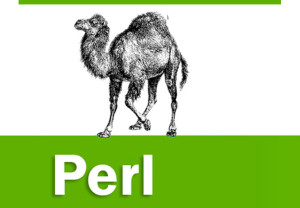 1.What is Perl?
1.What is Perl?
Perl is a stable, cross platform programming language.
Though Perl is not officially an acronym but few people used it as Practical Extraction and Report Language.
It is used for mission critical projects in the public and private sectors.
Perl is an Open Source software, licensed under its Artistic License, or the GNU General Public License (GPL).
Perl was created by Larry Wall.
Perl 1.0 was released to usenet’s alt.comp.sources in 1987
At the time of writing this tutorial, the latest version of perl is 5.16.2
Perl is listed in the Oxford English Dictionary.
2.What are the features of Perl programming?
Perl takes the best features from other languages, such as C, awk, sed, sh, and BASIC, among others.
Perls database integration interface DBI supports third-party databases including Oracle, Sybase, Postgres, MySQL and others.
Perl works with HTML, XML, and other mark-up languages.
Perl supports Unicode.
Perl is Y2K compliant.
Perl supports both procedural and object-oriented programming.
Perl interfaces with external C/C++ libraries through XS or SWIG.
Perl is extensible. There are over 20,000 third party modules available from the Comprehensive Perl Archive Network (CPAN).
The Perl interpreter can be embedded into other systems.
3.What are the benefits of Perl programming in using it in web based applications?
Perl used to be the most popular web programming language due to its text manipulation capabilities and rapid development cycle.
Perl is widely known as ” the duct-tape of the Internet”.
Perl can handle encrypted Web data, including e-commerce transactions.
Perl can be embedded into web servers to speed up processing by as much as 2000%.
Perl’s mod_perl allows the Apache web server to embed a Perl interpreter.
Perl’s DBI package makes web-database integration easy.
4.Is perl a case sensitive language?
Yes! Perl is a case sensitive programming language.
5.What is a perl identifier?
A Perl identifier is a name used to identify a variable, function, class, module, or other object. A Perl variable name starts with either $, @ or % followed by zero or more letters, underscores, and digits (0 to 9).
6.What are data types that perl supports?
Perl has three basic data types − scalars, arrays of scalars, and hashes of scalars, also known as associative arrays.
7.What are scalar data types in perl?
Scalars are simple variables. They are preceded by a dollar sign ($). A scalar is either a number, a string, or a reference. A reference is actually an address of a variable, which we will see in the upcoming chapters.
8.What are Arrays in perl?
Arrays are ordered lists of scalars that you access with a numeric index which starts with 0. They are preceded by an “at” sign (@).
9.What are Hashes in perl?
Hashes are unordered sets of key/value pairs that you access using the keys as subscripts. They are preceded by a percent sign (%).
10.How will you declare a variable in perl?
Perl variables do not have to be explicitly declared to reserve memory space. The declaration happens automatically when you assign a value to a variable. The equal sign (=) is used to assign values to variables.